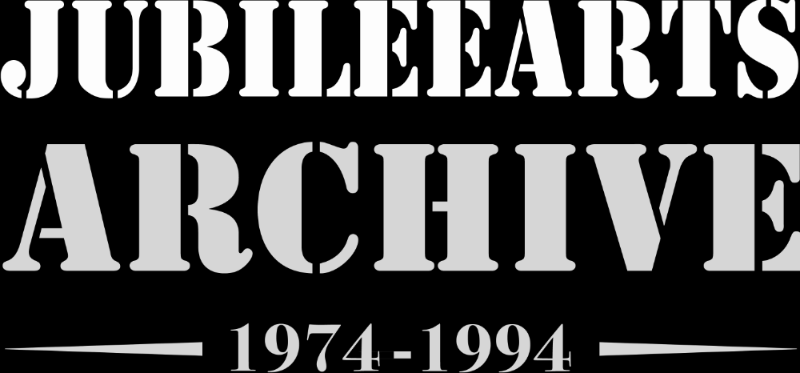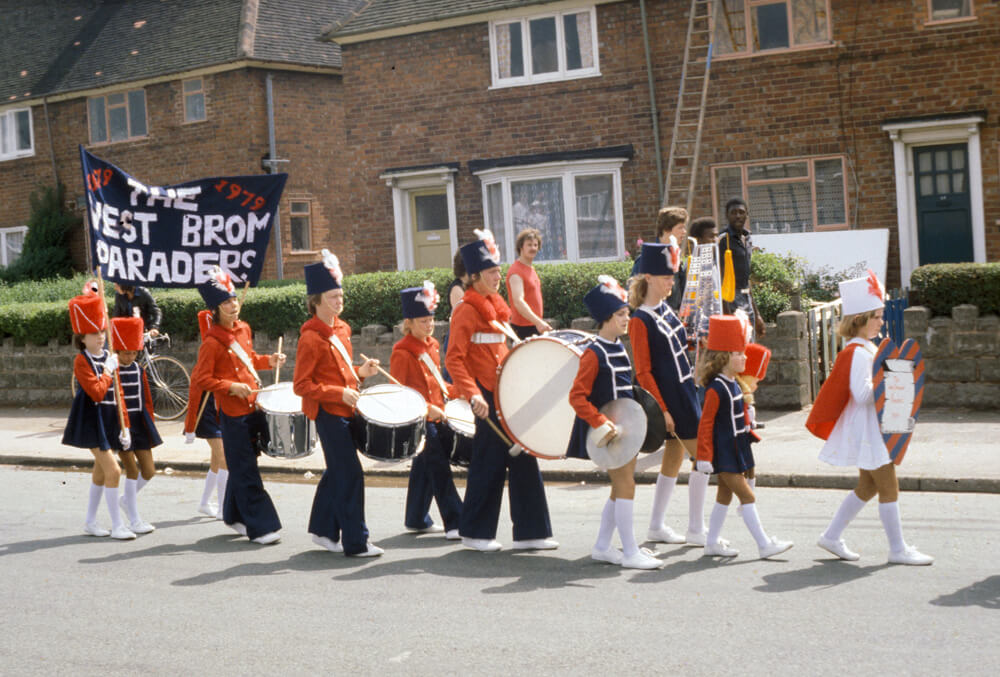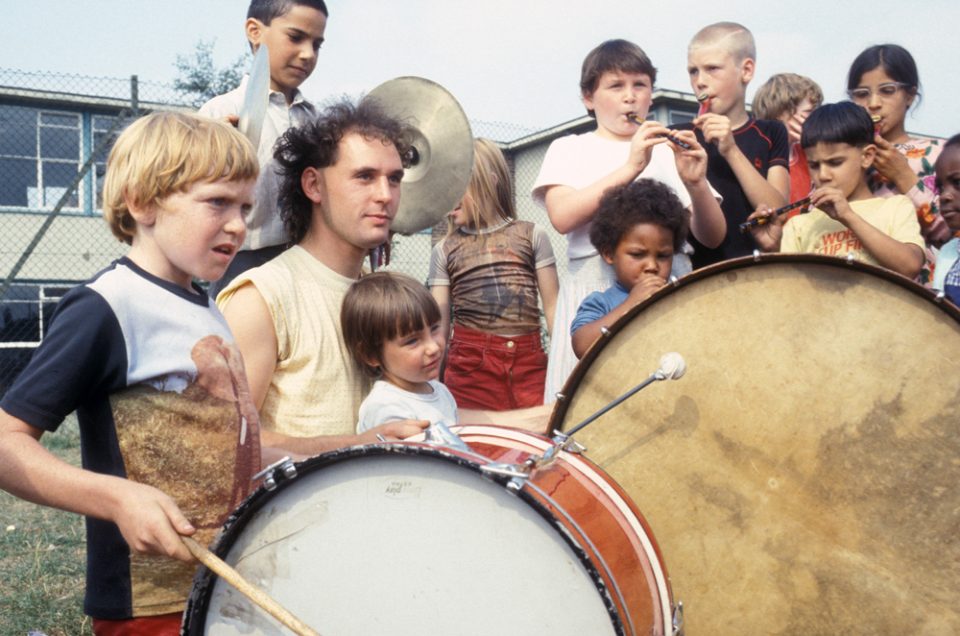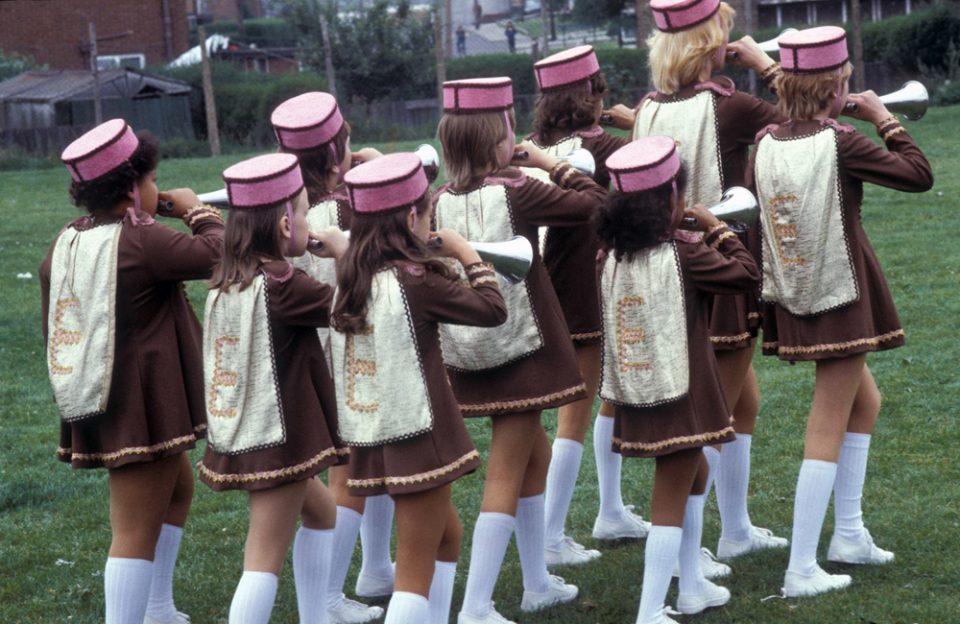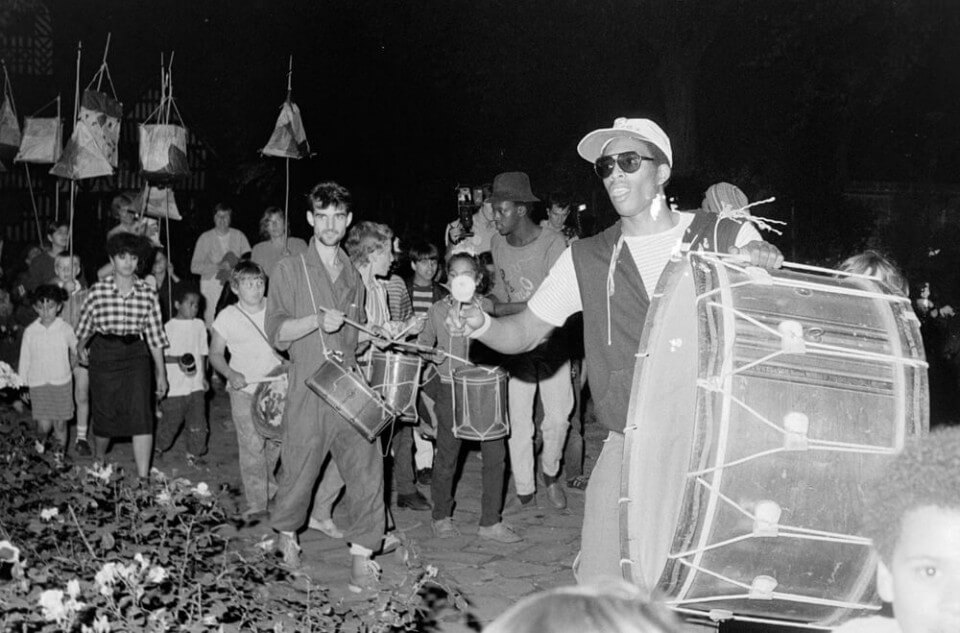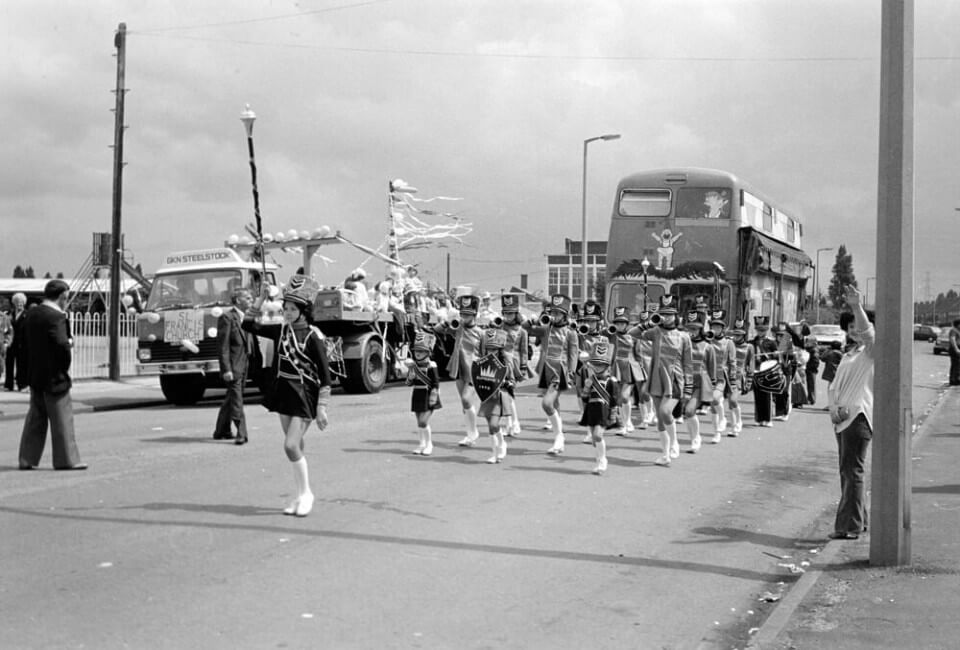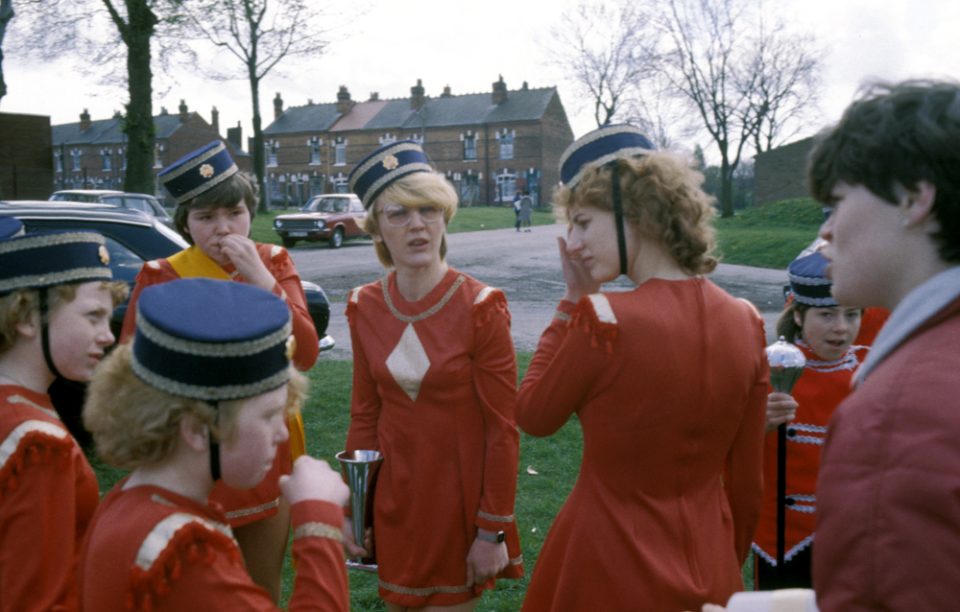Children’s marching jazz bands were a particular feature of the Black Country, often equipped with just kazoos and maces, a semblance of a uniform, though some groups expanded to include drums, perhaps even a marimba and stylophone if they were successful with fundraising. The tradition of marching bands in the locality dates back at least to the 1920s. You’d see them at church fetes, tenants events, carnivals, local fetes in the park, on protest marches and at numerous festive events organised by Jubilee Arts. One particular marching band, the Beechmen Bugle and Drum Corps in West Bromwich – some 80 strong – developed a particular expertise, basing themselves very much on American style marching bands, with even their own ‘colour guard’. Peter Emina, who had previously worked at Jubilee, interviewed them for a feature on Central Television in 1984, the year they were also featured on the front cover of The Sunday Times Magazine to illustrate a particularly unfavourable article about the borough of Sandwell – which in turn inspired Jubilee to develop a programme called ‘The People’s Portrait’.
This particular photograph was taken in Greets Green as a carnival processes towards Farley Park. The West Bromwich Paraders pictured here soon changed their named to The Sovereignettes. The year before an article in the Midland Chronicle, of September 19th, 1978, gives a flavour of such an event:
‘Jazz bands delight the crowds. 12 junior jazz bands pitted their skills against each other on Jesson Playing Fields. A Gala Day organized by the Sandwell Silver Shadows, a band made up of girls mainly from Greets Green. They no doubt picked up several tips from the former world champions, Burntwood Bluebirds, who picked up the £60 prize.’
Set in Wolverhampton, a 1986 feature film ‘Knights and Emeralds’ told the story of the rivalry between two Black Country school marching bands. It was written and directed by Ian Emes, a graduate of Birmingham College of Art who became Pink Floyd’s animator. It didn’t do very well at the box office.
As for the kazoos, this instrument was co-invented by a German clockmaker, Thaddeus Von Klegg, and an African-Amercian, Alabama Vest, in the 1840s. Based on the African mirliton, the kazoo is part of the family of musical instruments known as membranophones. This means you don’t blow into a kazoo, you hum into it.
